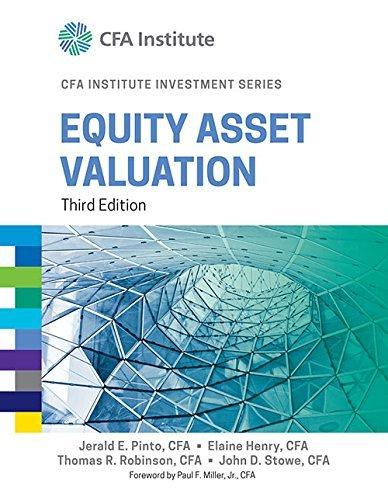Long-term historical average valuation multiples are frequently used in equity analysis as a reference point or as
Question:
Long-term historical average valuation multiples are frequently used in equity analysis as a reference point or as justification of a target multiple at which the shares are expected to trade in the future. Such widespread use is predicated on a belief in mean reversion, the idea that over time the valuation of a stock will revert to its long-term historical average.
Of course, this implicitly assumes that the future growth and profitability of the company will resemble the past. If the future outlook differs significantly from the past, the historical average multiple might not be relevant. The multiple may not be computed in the same manner by all analysts. The underlying financial data can be trailing, forward, or current year.
Answer the following assumptions about a hypothetical company with premium, discount, or not applicable on the basis of how you would expect the stock’s future multiple to compare with its long-term historical average, keeping all other factors constant.
Assumptions:
i. The company is likely to earn higher returns on invested capital in the future.
ii. Earnings growth is likely to accelerate in the future.
iii. The intensity of competition is likely to increase in the future.
iv. The company makes a major acquisition or divestiture.
Step by Step Answer:






